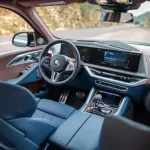In the early days of automobiles, the primary focus was on getting from point A to point B. However, as time passed, in-car entertainment systems became an integral part of the driving experience.
In this article, we’ll explore the evolution of in-car entertainment systems, from the humble car radio to the sophisticated infotainment centers that are now standard in many vehicles.
1. The Birth of Car Radios: A Revolution in On-Road Entertainment
The first significant advancement in in-car entertainment came with the introduction of car radios in the 1930s. These early radio units were bulky and often required significant installation efforts, but they marked a revolution in on-road entertainment. Drivers and passengers could tune in to their favorite music, news broadcasts, and even live radio shows, making long drives more enjoyable.
**2. The Age of Cassette Decks: Portable Music in Your Car**
The 1960s and 1970s brought the era of cassette decks in cars. This innovation allowed drivers to play their cassette tapes, offering greater flexibility and control over the music they wanted to listen to. The cassette deck era also saw the rise of car audio enthusiasts who customized their vehicles with high-quality audio systems.
**3. Compact Disc (CD) Players: Crystal Clear Sound Quality**
The 1980s and 1990s witnessed the adoption of CD players in cars. CDs offered superior sound quality compared to cassette tapes and quickly became the standard for in-car entertainment. Multi-disc CD changers allowed drivers to carry a selection of their favorite albums on the road.
**4. GPS Navigation Systems: Finding Your Way with Ease**
In the late 1990s and early 2000s, GPS navigation systems were integrated into cars. These systems not only provided directions but also introduced the concept of visual displays in car interiors. Drivers could see maps, real-time traffic updates, and points of interest on the screen.
**5. Touchscreen Infotainment Systems: A Revolution in Connectivity**
The mid-2000s marked a significant shift with the introduction of touchscreen infotainment systems. These systems combined entertainment, navigation, and connectivity features into one central interface. Drivers and passengers could control music, make calls, send messages, and even access internet apps through these intuitive touchscreens.
**6. Smartphone Integration: Seamless Connectivity**
One of the most influential developments in in-car entertainment systems has been smartphone integration. Apple CarPlay and Android Auto, introduced in the 2010s, allowed drivers to mirror their smartphone interfaces on the car’s infotainment screen. This integration enabled hands-free calling, texting, music streaming, and access to navigation apps directly from the vehicle’s touchscreen.
**7. Voice Recognition: The Rise of Virtual Assistants**
Voice recognition technology has also become a key component of modern in-car entertainment systems. Drivers can interact with their vehicles using voice commands, enabling them to adjust settings, make calls, and send messages without taking their hands off the wheel.
**8. Internet Connectivity: Staying Connected on the Go**
Many modern vehicles come equipped with in-car Wi-Fi, turning the car into a mobile hotspot. Passengers can surf the internet, stream content, and stay connected while on the road. This feature has transformed long journeys into productive or leisurely experiences.
**9. Rear-Seat Entertainment: Keeping Passengers Entertained**
To cater to passengers in the rear seats, some vehicles offer rear-seat entertainment systems with screens and the ability to play movies, video games, and music. These systems are especially popular for family road trips.
**10. Future Innovations: Autonomous Driving and Beyond**
As technology continues to advance, the future of in-car entertainment systems holds exciting possibilities. With the advent of autonomous driving, we can expect entertainment systems that cater to passengers’ needs even more, as they may no longer need to focus on driving. Augmented reality (AR) displays, immersive audio experiences, and enhanced connectivity options are some of the innovations that may shape the future of in-car entertainment.
**Conclusion: The Evolution Continues**
In-car entertainment systems have come a long way, evolving from simple car radios to sophisticated infotainment centers that offer connectivity, convenience, and entertainment in one package. As technology continues to advance, these systems will likely become even more integrated into the driving experience, ensuring that drivers and passengers stay connected and entertained while on the road. The evolution of in-car entertainment systems is a testament to the ever-changing landscape of automotive technology and the desire to make every journey an enjoyable one.


